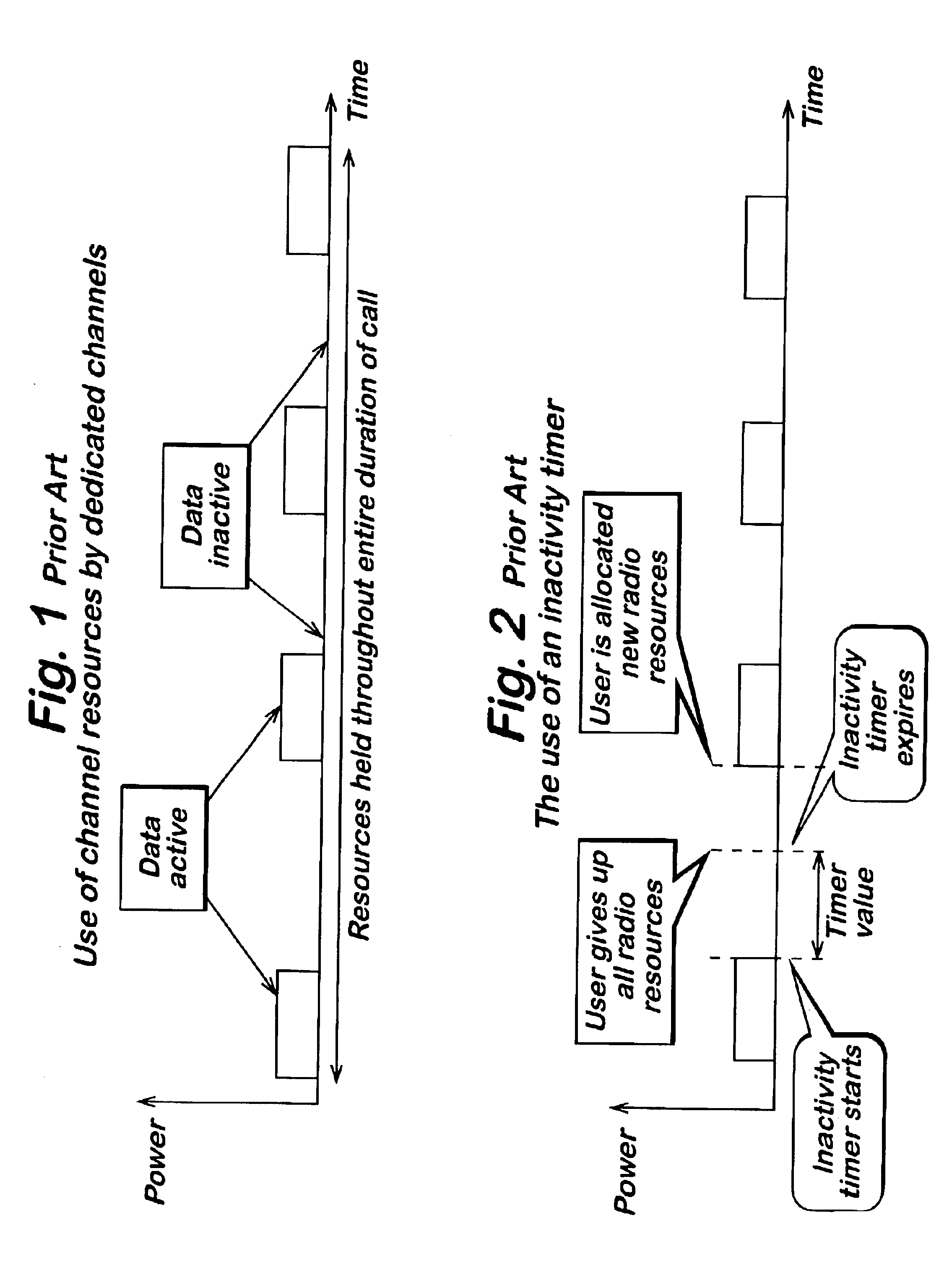Method of selecting length of time of inactivity on a channel dedicated to a user terminal to be detected for the channel to be released, and a corresponding network for radio telecommunications
a technology of user terminals and channels, applied in the field of wireless communication, can solve the problems of requiring a significant amount of base station transmit power, and achieve the effect of reducing excessive signalling, reducing the use of radio resources, and reducing the use of excessive signalling
- Summary
- Abstract
- Description
- Claims
- Application Information
AI Technical Summary
Benefits of technology
Problems solved by technology
Method used
Image
Examples
Embodiment Construction
[0030]In one embodiment of the present invention, method is provided for selecting length of time of inactivity on a channel dedicated by a telecommunications base station to communications with a user terminal to be detected for the channel to be released. The present invention also relates to a corresponding network for radio telecommunications
[0031]As shown in FIG. 5, a preferred UMTS radio access network UTRAN 10 consists of a radio network controller RNC 12 which controls the operation of several base transceiver stations (base transceiver stations BTS 14, denoted NodeB in UMTS terminology, and one of which is shown in FIG. 5 for simplicity). A base transceiver station 14 communicates with a mobile user terminal (e.g., user equipment UE 16) during a call connection to that user terminal 16.
[0032]User-specific data inactivity timers are provided, i.e. each user can be assigned a different inactivity timer value. This timer value for a user terminal is selected based on the base ...
PUM
 Login to View More
Login to View More Abstract
Description
Claims
Application Information
 Login to View More
Login to View More - R&D
- Intellectual Property
- Life Sciences
- Materials
- Tech Scout
- Unparalleled Data Quality
- Higher Quality Content
- 60% Fewer Hallucinations
Browse by: Latest US Patents, China's latest patents, Technical Efficacy Thesaurus, Application Domain, Technology Topic, Popular Technical Reports.
© 2025 PatSnap. All rights reserved.Legal|Privacy policy|Modern Slavery Act Transparency Statement|Sitemap|About US| Contact US: help@patsnap.com



